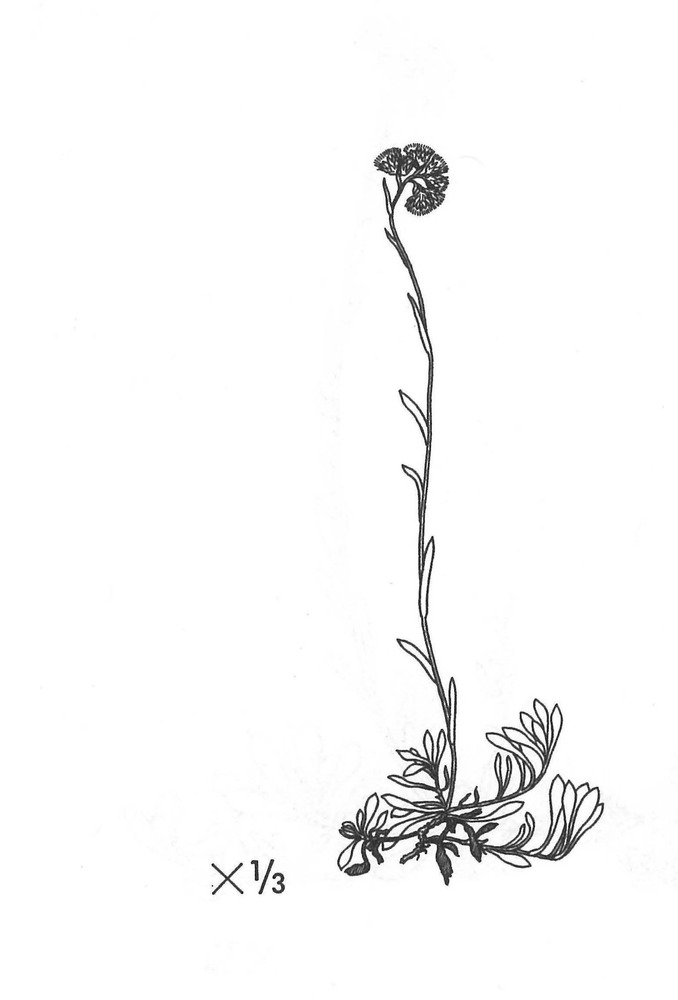| Antennaria rosea Greene | |||
| |||
| Family | Compositae — APG family: Asteraceae | ||
| Synonyms | Antennaria elegans Pors., Antennaria incarnata Pors., Antennaria dioica var. rosea (Greene) D. C. Eat., Antennaria oxyphylla Greene, Antennaria breitungii Pors. | ||
| Description | Matted, stoloniferous; leaves gray-tomentose on both sides; basal leaves oblan- ceolate to spatulate; heads several in subcapitate to corymbose inflorescence; in- volucral bracts lanceolate, obtuse, the outer broader, pink, pinkish, or rarely straw- colored. | ||
| Ecology | In the mountains to about 2,000 meters. Described from Utah or Nevada. | ||
| Taxonomy notes | An extremely variable complex composed of numerous, possibly apomictic or partly apomictic types. Var. nitida (Greene) Breitung (A. nitida Greene; A. Laingii Pors.; A. subviscosa with respect to western plant) has pure white involucral bracts, but occupies about the same range as the typical plant. Described from Carlton Island, James Bay. |
This is a digital representation of Eric Hultén’s ‘Flora of Alaska and Neighboring Territories: A Manual of the Vascular Plants’, which was published by Stanford University Press in 1968. The book was digitized by C. Webb (at UAMN) as part of the Flora of Alaska project, with funding by the US NSF (Grant 1759964 to Ickert-Bond & Webb), and with permission of Stanford University Press. Data and images © 1968 Board of Trustees of the Leland Stanford Jr. Univ. Usage licence: Creative Commons BY-NC-SA 4.0. NB: You may find OCR errors; please refer to the hard-copy if in doubt.
